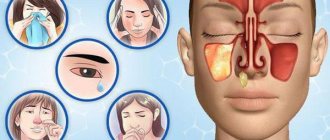Weather dependent
The situation, which does not require serious medical intervention, is explained by sensitivity to atmospheric and climatic changes. It has been noticed that some people react painfully to both solar activity and a decrease in atmospheric pressure. In such situations, they experience a narrowing of vascular tone, which leads to moderate anemia. If at the same time internal pressure tends to increase, heaviness in the head, pain, weakness and weakness occur.
When “flares” occur on the Sun, causing magnetic storms, some people experience blood thickening. Since hemoglobin contains large volumes of iron, when magnetic activity increases, it attracts its own elements, blinding red blood cells. Clots form that block small capillaries, oxygen starvation occurs again, causing a person to feel weak, tired, dizzy and in pain.
Temperature effects on blood vessels are also observed. An increase in temperature affects the dilation of blood vessels, and a cold snap - on the contrary. Improper regulation of this mechanism in vegetative-vascular dystonia leads to a deterioration in well-being. Other unfavorable factors affecting sensations in the head are:
- constant lack of sleep;
- tension of the nervous system when engaged in monotonous work;
- prolonged or uncontrolled use of medications, narcotic drugs;
- drinking alcohol the night before;
- sudden allergic reaction with swelling of brain tissue;
- forced fasting, diets without glucose consumption;
- acclimatization period upon arrival to another area;
- climbing to altitude (altitude sickness);
- high degree of responsibility at work, before an important event;
- head injury.
In most cases, to improve your well-being, it is enough to reconsider your lifestyle, slightly adjust your activity and rest schedule, and balance your diet. If this does not help, and the discomfort increases, you should see a doctor.
Possible diseases
Discomfort in the head occurs due to metabolic disorders. For example, a lack of glucose, which is a nutrient for nerve tissue, leads to a feeling of foggy haze in the head. Additional signs include irritability, increased sweating, weakness, rapid heartbeat, inability to concentrate, and confusion. Associated symptoms will help make a differential diagnosis and prescribe the correct treatment.
Vegetovascular dystonia
A heavy head is a symptom that is often observed with VSD. Vegetative-vascular dystonia develops as a result of disruption of the regulatory functions of the central nervous system and is accompanied by a change in the tone of the vascular wall. Associated symptoms: pain in the heart area, general weakness, increased fatigue, respiratory failure (rapid, shallow breathing, feeling of lack of air), cardiac arrhythmia (rapid heartbeat). Symptoms may be observed: darkening of the eyes, feeling of chills or heat, tremors of the limbs.
Impaired blood circulation and liquor dynamics
Pathology caused by venous congestion in the skull area is manifested by heaviness in the head, dizziness, and weakness. Patients describe sensations as if they were pressing, bursting from the inside. The condition is accompanied by a dull pain in the area of the skull. In most cases, the pathological focus is limited to the occipital region, sometimes unpleasant sensations spread throughout all parts of the skull.
If the venous outflow is disrupted, the constant feeling of a heavy head, which hurts and is dizzy, intensifies if the patient remains in a horizontal position for a long time, for example, after a night's sleep. With an increase in intracranial pressure, patients complain of a feeling of fullness, noise, ringing in the ears, sound signals supplied from the outside are perceived painfully, as are light stimuli. Symptoms are common: meningeal syndrome, confusion, repeated bouts of vomiting.
Vertebrogenic pathologies and diseases of the musculoskeletal system
Osteochondrosis (destructive-dystrophic changes in bone tissue) and spondylosis (formation of pathological growths on bone tissue) of the cervical spine are manifested by pain. Pain in the spine area increases after physical activity. Pathologies are characterized by the appearance of pain in the skull area, a feeling of compression, fullness, and heaviness in the head. Associated symptoms: dizziness, muscle spasms, limited mobility of the spinal column, numbness and tingling in the extremities.
Fibromyalgia is a disease of unknown etiology, which is characterized by painful sensations in the skeletal muscles, most often in the occipital area, in the back, neck, shoulders, hips, and chest. Associated symptoms: heavy, cloudy and not normal head, confusion, increased fatigue. Patients complain of muscle stiffness in the morning, poor health, deterioration of cognitive abilities (confusion, inability to concentrate).
Neurotic disorders
The feeling of an empty head often occurs with neurasthenia, a progressive psychopathological disorder that develops against the background of chronic stress or during treatment of a somatic illness. Often, such disorders are detected in patients prone to perfectionism. The reasons for the feeling of a heavy head and the state when there is pressure in the skull from the inside, or you want to quickly think, but your thought processes are inhibited, are associated with asthenia of psychogenic origin.
Associated symptoms: heavy head, dizziness, general weakness, daytime drowsiness, night insomnia. Symptoms are often observed: pain in the skeletal muscle area, feelings of depression and anxiety, increased sensitivity to light and sound stimuli, sleep disturbance. Patients are unable to control their emotions and tend to quickly lose self-control. In the later stages of the course, lethargy, apathy, and loss of interest in the surrounding reality are observed.
Systemic diseases
Lupus erythematosus is a chronic inflammatory disease associated with autoimmune disorders. Symptoms depend on the location of the lesion. Damage to the joints is manifested by pain and deformation of bone structures. Damage to the skin is manifested by characteristic erythema (redness of the skin), alopecia (hair loss).
Damage to the respiratory system is accompanied by recurrent pleurisy. Neurological symptoms include a feeling of a cast-iron head, neuropathy, psychosis, convulsive syndrome, aseptic meningitis, cerebellar disorders (ataxia - impaired coordination when contracting a muscle group, motor coordination disorder).
Vestibular disorders
Constant dizziness and heaviness in the head are symptoms characteristic of diseases of the cardiovascular and endocrine systems. Non-systemic forms of dizziness are accompanied by a feeling of imminent loss of consciousness, feelings of lightheadedness, fog and heaviness inside the skull. Such symptoms are typical for diseases of the inner and middle ear, which develop under the influence of a variety of associated factors.
Systemic forms arise as a result of pathological processes affecting parts of the vestibular apparatus - structures located in the area of the inner ear, and parts of the brain responsible for the perception and processing of external information. Associated symptoms depend on the type of pathology. For example, with Meniere's disease, attacks of dizziness and a feeling of a cotton head are complemented by deterioration in hearing acuity, noise, ringing in the ears, and impaired motor coordination in the later stages (staggering, unsteadiness when walking).
In addition to the main symptoms, peripheral dizziness is usually manifested by autonomic disorders - rapid heartbeat, jumps in blood pressure, increased sweating, hyperemia (redness) of the skin. When parts of the brain responsible for processing information about the position of the body in space are damaged, signs are usually detected: imbalance, unsteadiness of gait, pain in the skull area, nausea, vomiting.
Possible diseases
Heavy sensations in the head against the background of increasing insomnia, lethargy, and cloudiness of consciousness may be a consequence of an underlying disease. The most common pathologies leading to such symptoms are:
- Vegetative-vascular dystonia. It appears during physical activity, when due to a violation of the vascular regulation mechanism, an outflow of venous blood occurs. In this case, the arterial overflows the blood channels in the skull, which creates a pressing feeling, especially in the occipital area.
- Meniere's disease. Pathology of the inner part of the auditory canal. The inflammatory process in the ear leads to excessive effusion of fluid, which accumulates in the ear labyrinth, putting pressure on brain tissue and nerve endings. Not only hearing suffers, but also coordination.
- Problems with the spine. The thinning of the cartilage layers leads to the fact that the discs of the spinal column compress each other, squeezing the tissues located between them, including nerves and blood vessels. As a result, blood flow to the brain slows down, and hypoxia of varying severity begins.
- Upper respiratory tract diseases. Inflamed, swollen, congested sinuses cause a feeling of something heavy accumulating in the head. Infection or other inflammation of the muscles at the base of the skull has the same effect.
- Diseases of the vascular network. Any vascular disorders lead to damage to brain tissue, since it is the first to suffer from a lack of oxygen. Even slight anemia leads to confusion, weakness, and stupor. Among the serious problems are atherosclerosis, vasculitis, tumor processes in the blood channels, and thromboembolism.
A special place is occupied by severe cancer pathologies, aneurysms, deep cysts in the brain and cervical spine. Any abnormally growing objects lead to compression of neighboring tissues, which is why the first sign is heaviness in the head. If such a condition bothers you systematically, there is a reason to seek medical help.
What to do when the head is cast iron?
Headache is one of the most common symptoms. There is probably no person who has not experienced this type of pain at least once in his life.
We prescribe pills to ourselves and take them on the principle of “whatever will help,” without thinking that taking medications for headaches more often than three times a week can provoke a so-called medicinal headache. We put off going to the doctor, without thinking or little understanding of the consequences of a headache.
What is a tension headache? What headache can you not tolerate for a minute? How to treat headaches? We addressed these and other questions to Alexander Sergeevich Tuleninov, a radiologist at MRI Expert Yelets LLC.
- Why does my head hurt and what can be hidden behind the headache?
Headache can occur in patients regardless of age.
According to ICHD-2, headaches that do not have an organic cause are called primary. Secondary (symptomatic) are the result of organic damage to the brain or other structures of the head and neck area, as well as systemic diseases.
— Alexander Sergeevich, tell us more about primary headaches.
One of the most common types of primary headaches is tension headaches. If a patient complains of a “cast-iron head” (“feeling of a hoop”, “cast-iron helmet”), then this is probably the kind of pain we are talking about. Such pains - pressing, squeezing, are a response to muscle tension or psycho-emotional overstrain under acute or chronic stress. Depending on the spasm of certain muscles, the patient may have a headache in the forehead, temples or back of the head.
— What organic causes of headaches are most common?
Among the organic causes that cause headaches are head injuries (both acute and their consequences), inflammatory processes (meningitis, meningoencephalitis, etc.), and space-occupying formations (tumors). Vascular diseases also often manifest themselves as headaches.
Separately, headaches of extracerebral etiology can be distinguished. Such pain can result, for example, from osteochondrosis of the cervical spine. Such pain, both episodic and chronic, is more often unilateral, usually localized in the cervical-occipital region, and can radiate to the temple.
Headache can also occur due to extra-cerebral causes such as sinusitis, glaucoma, and dental diseases.
— We talked about different types of headaches and realized that not every headache, even a very severe one, hides a serious illness. What kind of headache should you be wary of?
If a patient experiences a headache that he describes as the worst pain of his life, urgent medical attention is necessary.
Pain that does not go away for several days, as well as headaches accompanied by neurological changes, for example, drooping lip folds, speech impairment, also require immediate medical intervention.
Headache, the intensity of which increases with coughing or changing body position, is also a concern.
— What should be the treatment for headaches and what specialty does a doctor deal with this category of patients?
If you have headaches, you should consult a neurologist.
Treatment for headaches depends on the causes that caused them and is complex. But any treatment must begin with diagnosis.
— What should a diagnosis for headaches include?
Mandatory diagnostic methods include blood pressure monitoring, general and biochemical blood tests. A test for liver enzyme markers is often prescribed.
Since headaches can be a mask for various diseases, an ophthalmologist, otolaryngologist or dentist may be involved in consultation.
Modern doctors are increasingly referring patients experiencing headaches to MRI diagnostics.
MRI of the brain is the primary research method for headaches, allowing to identify inflammatory processes, liquorodynamic disorders, congenital anomalies, the existence of which the patient did not suspect, and any space-occupying formations.
Carrying out MR angiography of the arteries and veins of the brain evaluates blood flow and also excludes or identifies both gross changes in the blood vessels of the brain that threaten life (such as aneurysmal dilatation), as well as stenosis and thrombosis.
To diagnose degenerative changes in the neck area, an MRI of the cervical spine is performed. In turn, MRI of the neck vessels will reveal stenoses that impair blood supply, resulting in headaches.
— Why undergo complex MRI diagnostics for headaches? If I have a headache, why do an MRI of the cervical spine?
As you can see, there are many reasons that lead to headaches. Therefore, a comprehensive study allows for the most informative diagnosis.
For example, an MRI of the brain, which clearly visualizes any space-occupying formations, does not show vessels, the pathology of which can lead to headaches. As for the neck, we previously said that banal osteochondrosis can cause severe, debilitating headaches for the patient. Therefore, there is a need for a separate MRI of the neck and its vessels. Thus, one study complements the other.
When carrying out MRI diagnostics aimed at identifying the causes of headaches, according to indications, it may be necessary to administer a contrast agent.
- Alexander Sergeevich, so what can you do to stop your head from hurting?
The correct solution in such a situation is to find a cause-and-effect relationship. Therefore, my advice will be banal - do not delay in seeing a doctor.
For reference:
Tuleninov Alexander Sergeevich – radiologist at MRI Expert Yelets LLC.
In 2014 he graduated from the Military Medical Academy named after. CM. Kirov with a degree in general medicine. Afterwards he completed training at the St. Petersburg Pediatric University at the Department of Medical Biophysics, specializing in radiology.
In operation since 2021.
How to understand the reason
In any case, you cannot guess on your own what caused the unpleasant condition. You need to go to the doctor and get checked. At the initial stage, it is enough to consult with a therapist, who, if necessary, will refer you for examination to other specialized specialists. It is impossible to determine the problem by eye, so research manipulations will be prescribed. To do this, carry out the following procedures:
- Laboratory analysis of blood and urine. The inflammatory process, anemia, sugar and cholesterol levels are detected.
- Doppler ultrasound of neck vessels. Shows the condition of the blood channels in this area.
- MRI of the brain. Detects any disturbances occurring inside the skull.
- CT scan of the brain and sinuses. Helps to specifically study the structures of the skull, the cavities inside it, the condition of the mucous membrane, the presence of inflammation and accumulation of fluids.
Tomographic scanning methods are the most informative, since without instrumental intervention they help to see any anomalies of varying complexity in the images. Only through MRI and CT can one recognize a serious disease at an early stage, record possible complications, and plan subsequent treatment.
Pathologies
Insomnia, heaviness, lethargy, cloudiness of consciousness and other unpleasant sensations can also be a consequence of the disease.
Vegetovascular dystonia
This condition occurs with minor physical activity, causing a disruption in the outflow of venous blood, which is why its excess begins to put pressure on all the tissues in the skull, its contents seem to overflow and become heavier. Heaviness during VSD is primarily felt in the back of the head. Dystonia is treated with medications.
Meniere's disease
Inflammation of the inner ear with the release of excess fluid. It is not excreted, but accumulates in the labyrinth, exerting a pressing effect on the nerve endings located there. Because of this, the vestibular system sends distorted signals to the brain. This causes swaying when walking, a heaviness in one direction.
Spine pathologies
Changes in the cartilage tissue of the spine, which often compresses the spinal nerves and cervical vessels. In the latter case, this leads to hypoxia, as well as the appearance of various abnormalities in the blood vessels.
Spondylosis is a deformation of the spine that causes head movement to cause severe pain and other unpleasant sensations.
Nose problems
Sinusitis is a disease of the nasal sinuses, mastoiditis is an accumulation of purulent deposits behind the ear, sinusitis and meningitis give the head a leaden heaviness. Myositis - inflammation of the muscles in the back of the head is also accompanied by “heaviness” of the head.
Vascular pathologies
As with poisoning, when there are abnormalities in the functioning of the organs of the circulatory system, the brain is the first to suffer. A slight lack of oxygen - and a person begins to have problems: confusion, the head becomes heavy, loss of strength, nausea, stupor.
Atherosclerosis, vasculitis and other vascular diseases often disturb patients also due to unpleasant sensations under the skull.
There are a lot of reasons why the head becomes heavy; we have given only the most common ones. If a symptom appears systematically, you should visit a doctor. He will take into account the characteristics of your body, prescribe diagnostics and recommend what you need to do to get rid of unpleasant sensations.
Diagnostic features
Standard manipulations in the form of ultrasound, analytical tests, and x-rays are carried out in any clinic at the place of treatment, but tomographic scanning will require special conditions. They are not always available in government agencies. To find clinics with the right equipment and trained experts, use our appointment service. Here you can find all the diagnostic centers in the city, which can be compared according to various parameters: reviews, ratings, prices, discounts, location, types of equipment, etc. Choose the services you need, call the service staff, book any procedures on special terms.
Lethargy
Iron deficiency
Diabetes
Atherosclerosis
Stroke
9961 04 May
IMPORTANT!
The information in this section cannot be used for self-diagnosis and self-treatment.
In case of pain or other exacerbation of the disease, diagnostic tests should be prescribed only by the attending physician. To make a diagnosis and properly prescribe treatment, you should contact your doctor. Lethargy: causes of occurrence, what diseases it occurs with, diagnosis and treatment methods.
Definition
The functioning of the nervous system is based on the reflex arc - the path along which irritation (signal) from the receptor passes to the effector organ. A reflex arc is a set of neural circuits consisting of sensory, intercalary and motor neurons that provide perception of a signal from the outside, conduct it to special centers of the brain, where the received information is analyzed and a response impulse is generated.
Thus, a high speed of impulse conduction and information processing is one of the necessary conditions for adequate speed of functioning of the nervous system.
Due to the fact that the structure of the nervous system is very complex, consisting of many cells connected to each other by nerve processes (nerve fibers), this system is subject to significant influence from the environment. Thus, changes in the composition of the fluid that washes the nerve cells, changes in temperature and other factors can significantly slow down its coordinated work.
Types of retardation
Retardation is manifested by a slowdown in the speed of certain nervous functions. In this case, both isolated changes can be observed (for example, a slowdown in motor activity, inhibition of perception), and complex ones - when all the main functions of the nervous system, including higher mental activity, slow down.
Retardation can develop acutely or gradually.
The more sudden it appears, the more attention must be paid to finding the reasons for its development. Possible reasons for the development of lethargy
There are many reasons for the slowdown of nervous processes, and one of them is
nervous exhaustion
. This term refers to the insufficiency of nerve tissue reserves to perform its functions, which develops during prolonged hard work of the nervous system.
The next condition associated with lethargy is oxygen starvation
central nervous system.
Lack of oxygen may be due to its insufficient supply from the outside (for example, staying in a poorly ventilated room), impaired gas exchange in the lungs due to various bronchopulmonary diseases
, impaired blood supply as a result of damage to the vessels supplying the central nervous system, or as a result of
heart failure
associated with poor blood supply to all organs and tissues.
Also, impaired oxygen delivery develops with anemia
- a decrease in the concentration of hemoglobin in the blood. Hemoglobin is a protein found in red blood cells that binds and carries oxygen from the lungs to every cell of our body.
Due to the fact that the nervous system's oxygen needs are high, oxygen deficiency quickly leads to disruption of its functioning.
Another cause of lethargy is a state of
hypoglycemia
- a decrease in blood glucose levels. It is observed when there is insufficient intake of glucose from food, during significant physical exertion (when glucose is predominantly spent by intensively working muscles), and when patients with diabetes mellitus overdose on insulin.
Lethargy also occurs due to toxic damage to the nervous system as a result of cerebral edema.
Diseases that cause lethargy
Among diseases of the cardiovascular system that may be associated with insufficient blood supply to the brain,
atherosclerotic vascular damage
, including against the background
of arterial hypertension, diabetes mellitus, heart failure
due to
myocardial infarction, myocarditis
and other diseases.
Bronchopulmonary diseases leading to insufficient oxygen saturation of the blood include pneumonia, chronic obstructive pulmonary disease, bronchial asthma
(especially at the time of an attack), etc.
Anemia
may develop due to a disorder of hematopoiesis (for example, iron deficiency anemia), destruction of red blood cells (hemolytic anemia), acute or chronic blood loss.
Hypoglycemia
observed not only in diabetes mellitus, but also in endocrine diseases, such as adrenal insufficiency, insulinoma, long-term severe liver diseases, etc.
Toxic damage to the central nervous system can be caused by the intake of certain toxic substances
from the outside, and by intoxication due to the development
of liver failure
(for example, with cirrhosis of the liver) or
renal failure
.
Intoxication syndrome accompanies most infectious diseases
, as well as many
malignant processes
.
Separately, it is worth noting life-threatening conditions that lead to cerebral edema and are manifested, among other things, by lethargy - these include stroke
, compression of the brain
by an intracranial tumor
,
traumatic brain injury
.
Which doctors should I contact if I feel lethargic?
Due to the fact that the cause of the development of lethargy can be diseases of a variety of organs and systems, if this symptom appears, you should consult a general practitioner, or. These specialists, after establishing the probable cause, can refer the patient to a nephrologist or hepatologist.
Diagnostics and examinations for lethargy
Diagnosis of diseases accompanied by lethargy begins with a survey and examination of the patient. Often this is enough to make a preliminary diagnosis. However, to confirm it, some additional research is necessary:
- a clinical blood test with a leukocyte count, which is necessary primarily to exclude anemia;








